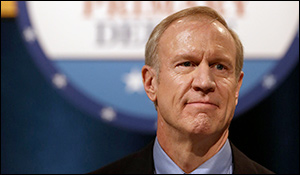By Jim Ellis
Sept. 17, 2018 — In news that got pushed aside because of all of last week’s primaries, the Siena College Research Institute entered into a polling partnership with the New York Times to survey what the news organization spokespeople indicate will be nearly 100 US House campaigns. The Times’ statement also says more people will be “talked to (in sampling groups) than ever before.”
 The other interesting twist is that the results will be published in real time, meaning readers can see the responses as they are being recorded. The full sample is targeted to be in the 500 range per congressional district, a very healthy size. But readers should be cautioned about trying to project a pattern before the individual respondent universe is fully developed.
The other interesting twist is that the results will be published in real time, meaning readers can see the responses as they are being recorded. The full sample is targeted to be in the 500 range per congressional district, a very healthy size. But readers should be cautioned about trying to project a pattern before the individual respondent universe is fully developed.
Siena College has been the featured New York Times pollster for several election cycles, concentrating on New York races. They regularly poll the state to test a governor’s approval rating, and how the electorate rates certain state-related and federal issues, along with conducting candidate ballot tests.
The 538 political analytics organization, which rates national, regional, and local pollsters, among other research, awards Siena an A grade in both the 2016 and 2018 election cycles, saying they have called 82 percent of the races correctly from 66 political surveys (60 in the 2016 election cycle, and six this year).
Siena records an average polling error rate of 4.9 percent, and concentrates on the live phoner method that includes conducting some respondent interviews on cell phones. The 538 organization records a Siena bias factor toward the Democrats of just 0.1 percent, which ties for one of the lowest in the polling universe and behind only Iowa’s Selzer & Company and Fairleigh Dickinson University, which scored a perfect 0.0 percent bias factor rating.


